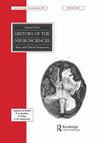与大脑功能的位置和结构有关的19世纪和20世纪的大脑地图
IF 0.3
3区 哲学
Q3 HISTORY & PHILOSOPHY OF SCIENCE
引用次数: 0
摘要
摘要本文概述了“大脑地图”的转变,该地图用于说明与运动、感觉和语言相关的皮层“中心”的位置,从19世纪的加尔和斯波尔茨海姆的图像开始,到21世纪的功能磁共振成像。在其间的几年里,新的方法需要新的大脑地图来说明它们,而大脑地图有助于将心理过程客观化和自然化。一种方法是对大脑皮层进行电刺激——1870年的Fritsch和Hitzig、1873年的Ferrier和1937年的Penfield就是例证——需要绘制大脑地图,显示具有扩展和重叠边界的功能中心。在另一种方法中,将皮层中心联系起来以解释失语症、失用症、alexia和失写症等复杂综合征的大脑地图最初由巴金斯基于1871年、韦尼克于1874年和利希特海姆于1885年构建,后来由利索尔于1890年、德杰林于1892年和利普曼于1920年构建,最终由格施温德于1965年和其他人在20世纪末构建。在这段时间里,大脑地图从大脑皮层上引发运动和感觉的点的图示,到与可识别功能相关的区域(中心)的图示,再到解释临床患者出现复杂症状的这些区域之间的联系的图示。到这一时期结束时,物理学、数学和认知科学的进步导致了一些发明,这些发明使得大脑皮层位置的地图可以从认知操作中获得,而不是从通常的电操作或消融操作中获得。“心理”因变量变成了“认知”自变量。本文章由计算机程序翻译,如有差异,请以英文原文为准。
Nineteenth- and twentieth-century brain maps relating to locations and constructions of brain functions
ABSTRACT This article is an outline of the transition in “brain maps” used to illustrate locations of cortical “centers” associated with movements, sensations, and language beginning with images from Gall and Spurzheim in the nineteenth century through those of functional magnetic resonance imaging in the twenty-first century. During the intervening years, new approaches required new brain maps to illustrate them, and brain maps helped to objectify and naturalize mental processes. One approach, electrical stimulation of the cerebral cortex—exemplified by Fritsch and Hitzig in 1870, Ferrier in 1873, and Penfield by 1937—required brain maps showing functional centers with expanded and overlapping boundaries. In another approach, brain maps that linked cortical centers to account for the complex syndromes of aphasia, apraxia, alexia, and agraphia were initially constructed by Baginsky in 1871, Wernicke in 1874, and Lichtheim in 1885, then later by Lissauer in 1890, Dejerine in 1892, and Liepmann in 1920, and eventually by Geschwind in 1965 and others through the late twentieth century. Over that intervening time, brain maps changed from illustrations of points on the cerebral cortex where movements and sensations were elicited to illustrations of areas (centers) associated with recognizable functions to illustrations of connections between those areas that account for complex symptoms occurring in clinical patients. By the end of this period, advancements in physics, mathematics, and cognitive science resulted in inventions that allowed brain maps of cortical locations derived from cognitive manipulations rather than from the usual electrical or ablative manipulations. “Mental” dependent variables became “cognitive” independent variables.
求助全文
通过发布文献求助,成功后即可免费获取论文全文。
去求助
来源期刊

Journal of the History of the Neurosciences
社会科学-科学史与科学哲学
CiteScore
1.00
自引率
20.00%
发文量
55
审稿时长
>12 weeks
期刊介绍:
The Journal of the History of the Neurosciences is the leading communication platform dealing with the historical roots of the basic and applied neurosciences. Its domains cover historical perspectives and developments, including biographical studies, disorders, institutions, documents, and instrumentation in neurology, neurosurgery, neuropsychiatry, neuroanatomy, neurophysiology, neurochemistry, neuropsychology, and the behavioral neurosciences. The history of ideas, changes in society and medicine, and the connections with other disciplines (e.g., the arts, philosophy, psychology) are welcome. In addition to original, full-length papers, the journal welcomes informative short communications, letters to the editors, book reviews, and contributions to its NeuroWords and Neurognostics columns. All manuscripts are subject to initial appraisal by an Editor, and, if found suitable for further consideration, full- and short-length papers are subject to peer review (double blind, if requested) by at least 2 anonymous referees.
 求助内容:
求助内容: 应助结果提醒方式:
应助结果提醒方式:


